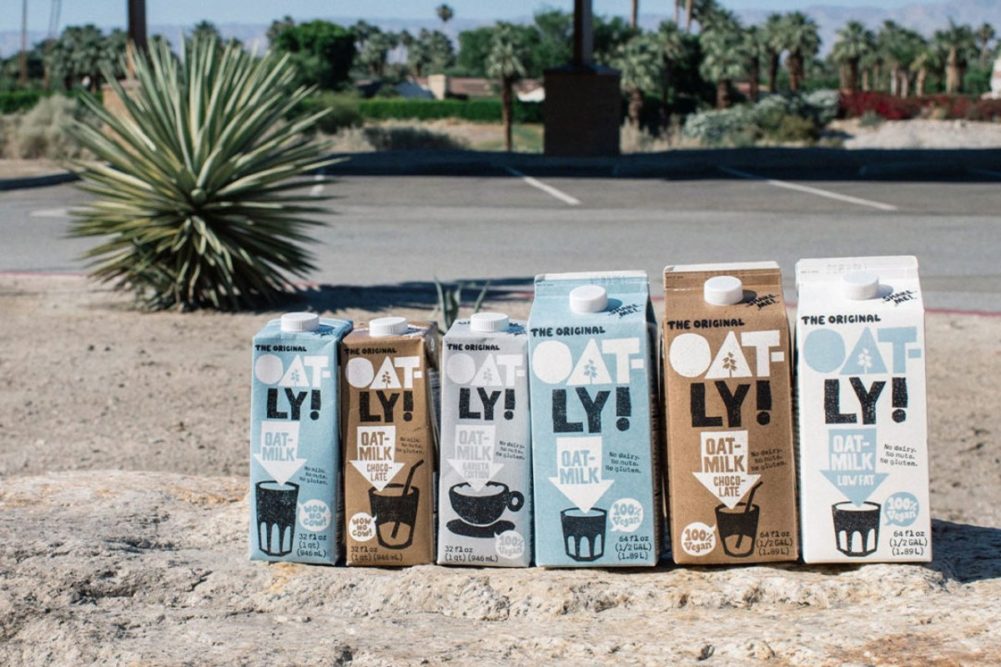MALMÖ, SWEDEN — Oatly Group AB continues to ramp up production capacity to meet increasing demand for plant-based dairy alternatives. Resistance continues in the form of COVID-19 effects.
Production at a new facility in Ogden, Utah, was lower than expected in the fourth quarter ended Dec. 31, 2021, due to COVID-19 and other factors, which hindered sales. In Asia, sales were lower than expected in the quarter as foodservice locations closed due to COVID-19.
“In the Americas, we are pleased with the recent production output improvement, particularly in our Ogden, Utah, facility,” said Christian Hanke, chief financial officer, in a March 9 earnings call. “However, given the COVID-related issues in the first quarter, including labor absenteeism due to a local spike in cases, supply chain challenges with raw materials, spare parts and logistics based on the Canada border, including the situation with truckers and bad weather, we expect lower production and sales volume in the first quarter, which will impact our sales by high mid-teens versus Q4 and meaningfully impact our gross margin due to continued ramp-up of Ogden and reliance on co-packers.”
Hanke added: “We expect accelerated growth in the back half of the year once Ogden is fully ramped and the Millville (NJ) oat base expansion is completed.
Oatly AG companywide still ended the year with over 600 million liters of run-rate capacity, a 72% increase compared with 2020, said Toni Petersson, chief executive officer of Malmö-based Oatly.
“Importantly, we believe our run-rate capacity provides us with required volumes to achieve our anticipated revenue growth for 2022,” he said. “We are continuing to prioritize growth investments over profitability to best position Oatly to serve customers and consumers as we convert dairy users to plant-based milk.”
Oatly manufactured 21% of its total volume in 2021 while co-packing accounted for 45% and hybrid 34%.
“Our target over the long term is to have 50% to 60% of our total volumes come from self-manufacturing, reducing our co-packing to 10% to 20% and hybrid manufacturing to 30% to 40%,” Petersson said. “We believe that this manufacturing should increase gross margins and profitability.”
Loss attributable to shareholders in the fiscal year was $212 million, which compared with a loss of $60 million in the previous fiscal year. Oatly’s price per share on the Nasdaq closed at $5.72 on March 9, which compared with a close of $5.73 on March 8 and an initial public offering of $17 on May 20, 2021.
Revenue in the fiscal year increased 53% to $643 million from $421 million. Oatly was the No. 1 selling oat-based brand by market share in the United Kingdom, Germany, Sweden, Switzerland and The Netherlands, according to Nielsen data for 2021. In the United States, Oatly’s market share in the total dairy alternatives category has grown to 6% from 4% over the past year.
“Once the dairy consumer is converted to plant-based milk, we see very strong repeat purchase behaviors,” Petersson said. “According to our consumer insight study, 60% to 70% of the consumers use plant-based milk at least once every two to three days, and nearly 80% consume it at least once per week. This highlights how quickly consumers switch to incorporating plant-based milk into the daily routine.”
In the fourth quarter, loss attributable to shareholders was $80 million, which compared with a loss of $37 million in the previous year’s fourth quarter. Revenue in the quarter increased 46% to $186 million from $127 million. Gross profit margin was 16%, down from 28% in the previous year’s fourth quarter. The decrease was due to additional costs for the startup of three new facilities, including higher depreciation of $6.4 million, a charge related to the startup production and inventory at the new Singapore facility of $2.3 million, and a higher share of co-packing production than planned.
In the current fiscal year Oatly expects revenue of $880 million to $920 million, which would be an increase of 37% to 43% compared with 2021. Capital expenditures are forecast between $400 million and $500 million in 2022 while run-rate production capacity should be about 900 million liters at the end of 2022.
“The conflict in Ukraine brings additional uncertainty with energy prices increasing and the broader implications of Ukraine being a large exporter of grains as well as vegetable oils, which could impact global pricing for these items, as well as Russia being a significant exporter of fertilizer,” Hanke said.

